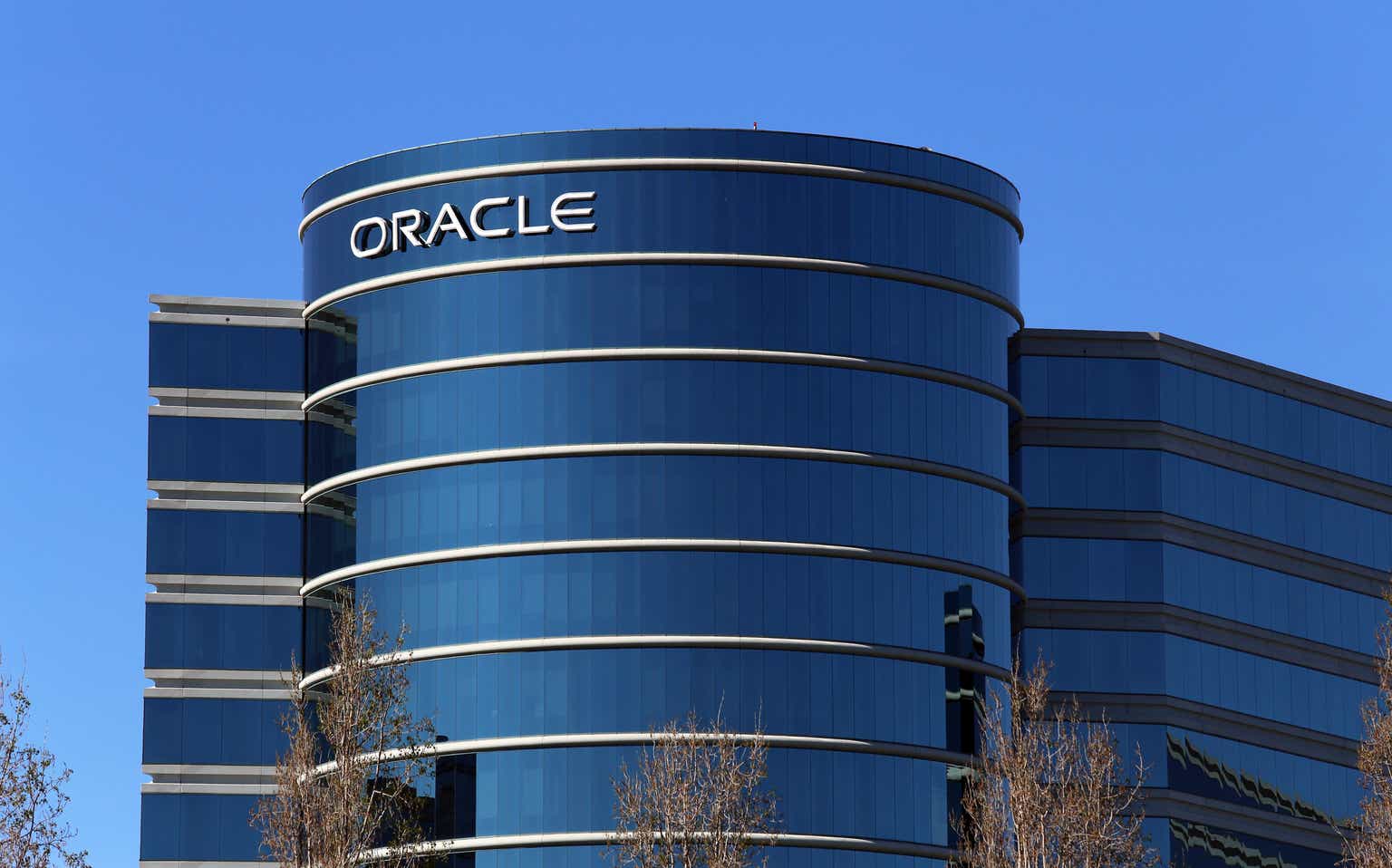Oracle Is Like Two Different Companies
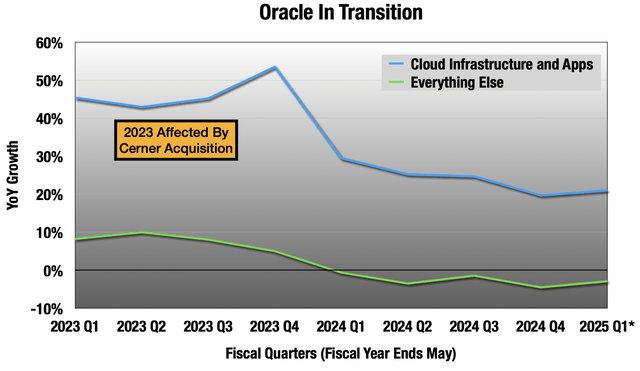
*Guidance midpoint (Oracle quarterly reports)
Oracle (NYSE:ORCL) is similar to Amazon (AMZN) in the sense that they have a very good cloud business, and then there’s the rest of the company. Oracle Cloud grew at 20% YoY in the quarter, but the rest of the company shrank by 5%. All that works out to revenue up 3% YoY for the quarter, and up 6% in the Q1 guidance shown at the right of the chart.
Cloud is starting to take over their operating statement.
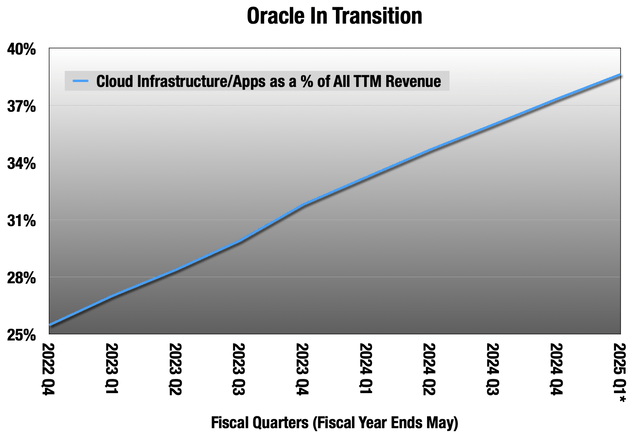
*Guidance midpoint (Oracle quarterly reports)
So obviously, everyone is paying more attention to that cloud portion, which includes both cloud versions of Oracle software [SaaS], and rentable infrastructure [IaaS] like AWS and Azure provide. Part of the weakness in the rest of the company is the switch by customers to managed SaaS versions of Oracle database software.
So that’s the context to everything. Everyone would like to see legacy Oracle not be much of a drag during that software transition to SaaS, but the focus is on the fast growing cloud portion, especially IaaS, that is transforming them into an AI powerhouse. That’s of course where my interest lies.
The Quarter
Like the two sides of transforming Oracle, there were definitely two sides of the quarter. On the one hand, the quarter came in soft, below expectations, including mine, on both cloud and non-cloud.
But:
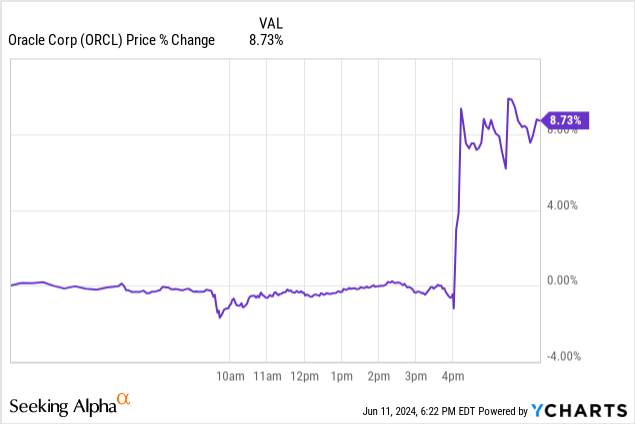
From 6/11/24 (YCharts)
So what’s the deal? Like last quarter, the underlying story was some rapid growth in their order book, and this all looks like IaaS cloud accelerating in the future.
- Backlog is at $98 billion versus $53 billion in revenue for fiscal 2024, just ended.
- The mix is 39% to be recognized in the next 12 months, evidence of a lot of newly signed 3-year contracts.
- But the bigger sign of new large contracts is the rapid growth of the backlog, up 23% sequentially, and 51% over the last two quarters. Q4 is the seasonal high for backlog, up 44% YoY. That’s astounding growth.
- It is being driven by the largest individual contracts they have ever signed, and with marquis names all around. Nvidia (NVDA), Microsoft (MSFT), Google (GOOGL), OpenAI and other big names in AI startups.
So there is a strong narrative developing.
- Though a little disappointing, cloud (SaaS-plus-IaaS) grew at 20% YoY.
- The smaller IaaS portion of that grew at 42%. It sounds strange to say it, but that was also a bit disappointing.
- All these new deals are additive to the growth that was already there. They are mostly in that smaller IaaS portion, the rentable infrastructure.
- That is going to push companywide growth into double digits in fiscal 2025, just begun, for the first time in a long time (excluding the fiscal 2023 effects of the Cerner acquisition).
- At some point during fiscal 2026, beginning in a year, cloud will overtake the legacy parts of Oracle.
There is just a really strong accelerating growth story for the IaaS portion of cloud. It is only 38% of cloud revenue, and 14% of consolidated revenue now, but that is going to grow quickly in fiscal 2025-2026.
Free Cash Flow and Capex
Mature software, the legacy part of Oracle, doesn’t grow much. But it is also asset-light and a free cash flow machine. Oracle had free cash flow margins over 30% for many years, and were able to drastically reshape the company’s capital structure through buybacks with all that cash.
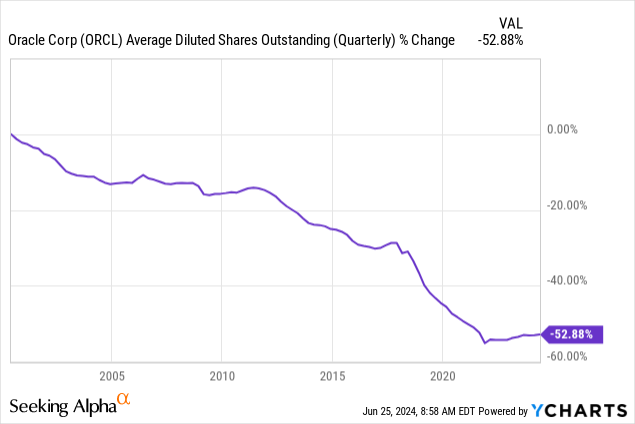
But as you see that buyback spree slowed down considerably in 2022. That’s when they began making much bigger investments into their cloud infrastructure to prepare for the wave of demand.
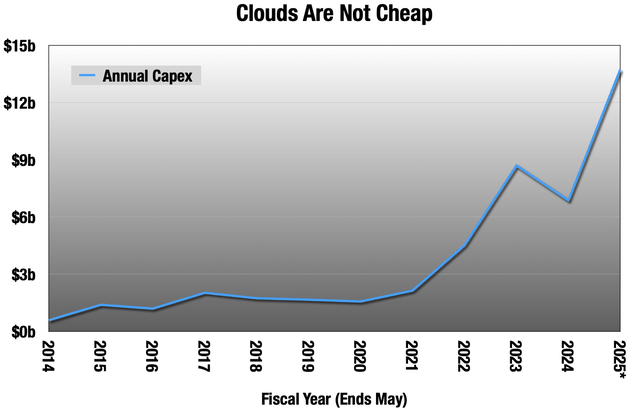
*Per annual guidance (Oracle annual reports)
That’s a rapid rise, and they are projecting that Capex will be over $13 billion this fiscal year, double fiscal 2024.
So that eats into free cash flow (operational cash flow minus Capex), and ultimately cash return to shareholders.
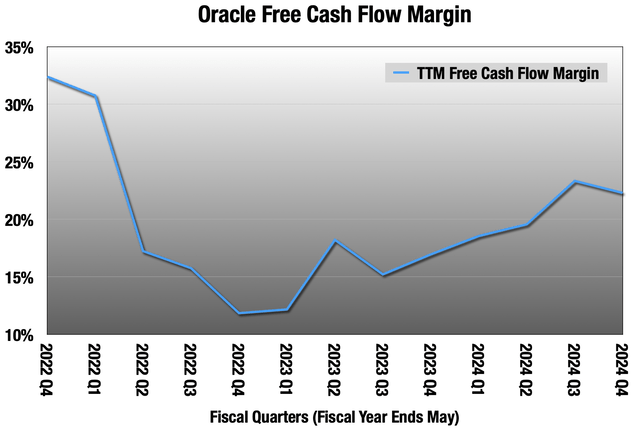
Oracle quarterly reports
As you see, free cash flow margin is recovering from that initial fiscal 2022 hit, but I don’t think they will get back to those 30%+ margins any time soon.
It’s a tradeoff, but one I’m willing to make.
The Upshot
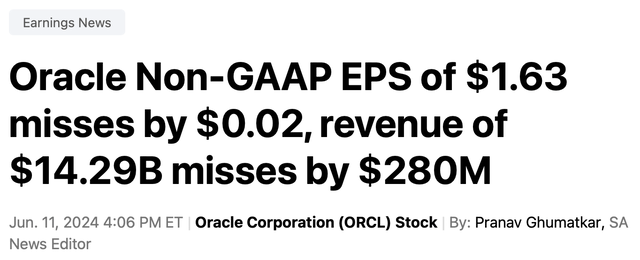
Seeking Alpha screenshot
The quarter was somewhat disappointing for Oracle, but they were able to successfully re-orient everyone towards the rapid growth in backlog (it was the first bullet point in the press release). I generally don’t put too much stock into software/services backlog composed of a mix of 1-year and 3-year contracts, but this rapid growth is undeniable.
The demand for Oracle IaaS services is clearly there, and they are rapidly building out new data centers that vary greatly in size. Because they were late to the cloud game, Oracle also has some of the most advanced, automated data center architecture in the world, and that advantage is starting to show through in price and demand.
Fiscal 2025-2026 is where this transformation comes to a head, and Oracle shifts from being primarily a mature software company to being primarily a cloud company riding the AI wave.
Read the full article here

